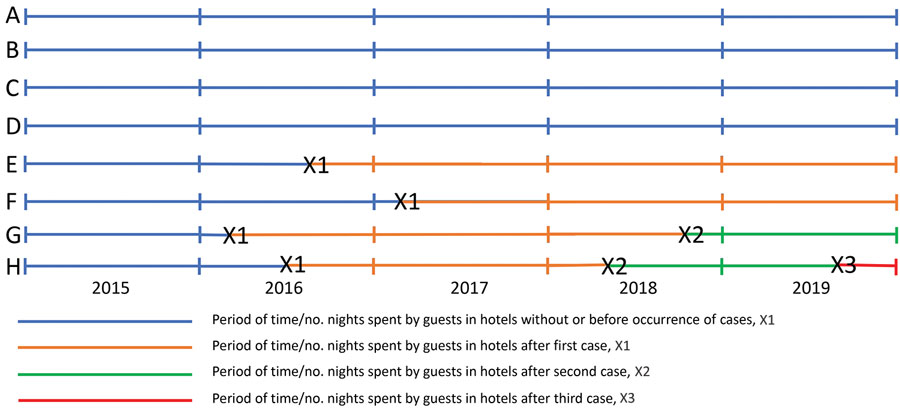Volume 30, Number 1—January 2024
Research
Incidence of Legionnaires’ Disease among Travelers Visiting Hotels in Germany, 2015–2019
Figure 1

Figure 1. Schematic diagram showing typical timelines used to calculate first-, second-, and third-case incidence rates for Legionnaires’ disease among travelers visiting hotels in Germany, 2015–2019. Data were collected from 29 countries that reported cases of travel-associated Legionnaires’ disease (TALD) to the European Legionnaires’ Disease Surveillance Network (https://www.ecdc.europa.eu/en/about-us/partnerships-and-networks/disease-and-laboratory-networks/eldsnet) after stays in hotels in Germany. Reports were from 26 European Union countries (Cyprus and Slovakia were excluded), Norway, Switzerland, and the United States. A–H indicates different hotels; X1 shows the occurrence of first TALD cases, X2 second TALD cases, and X3 third TALD cases. LD, Legionnaires’ disease.